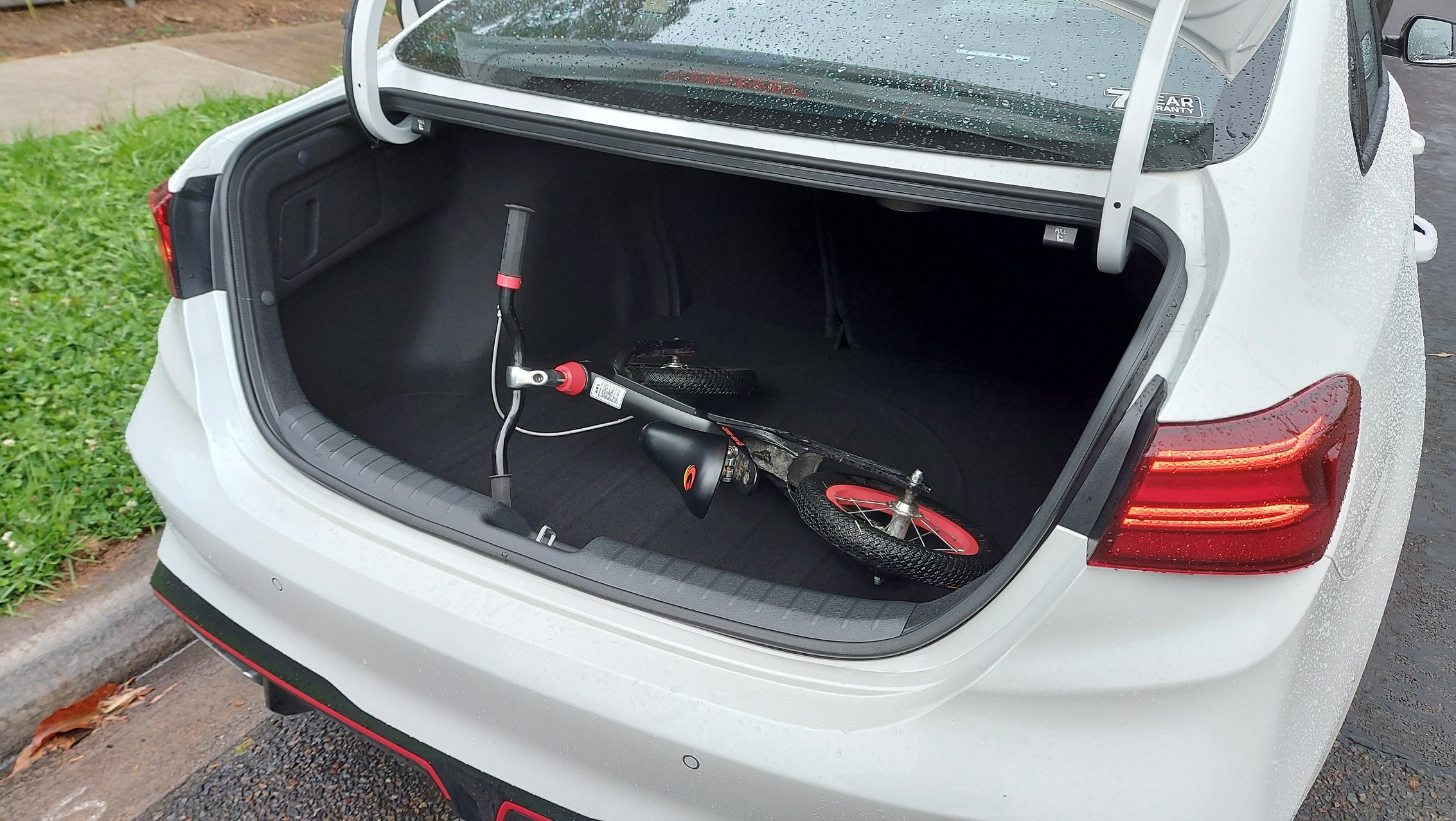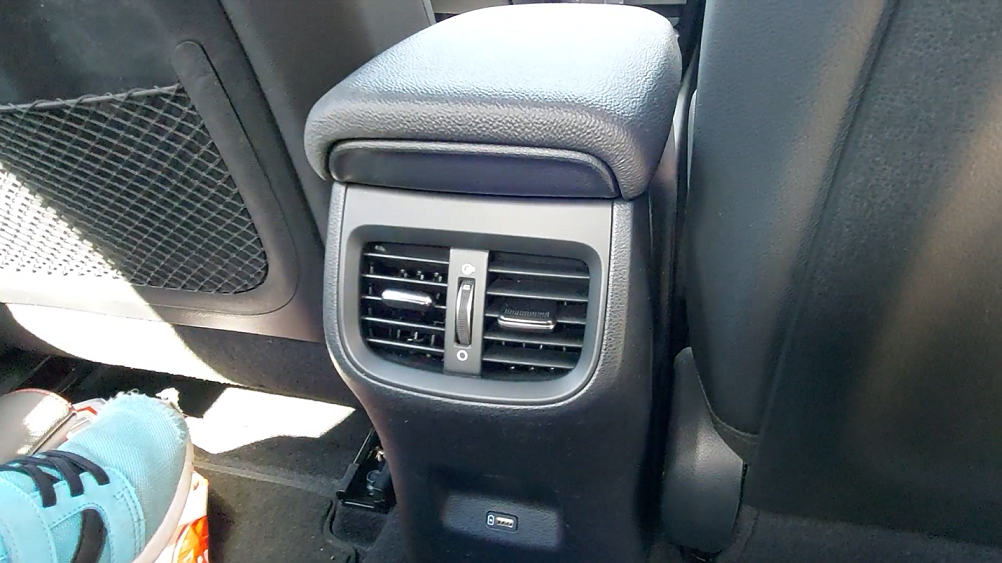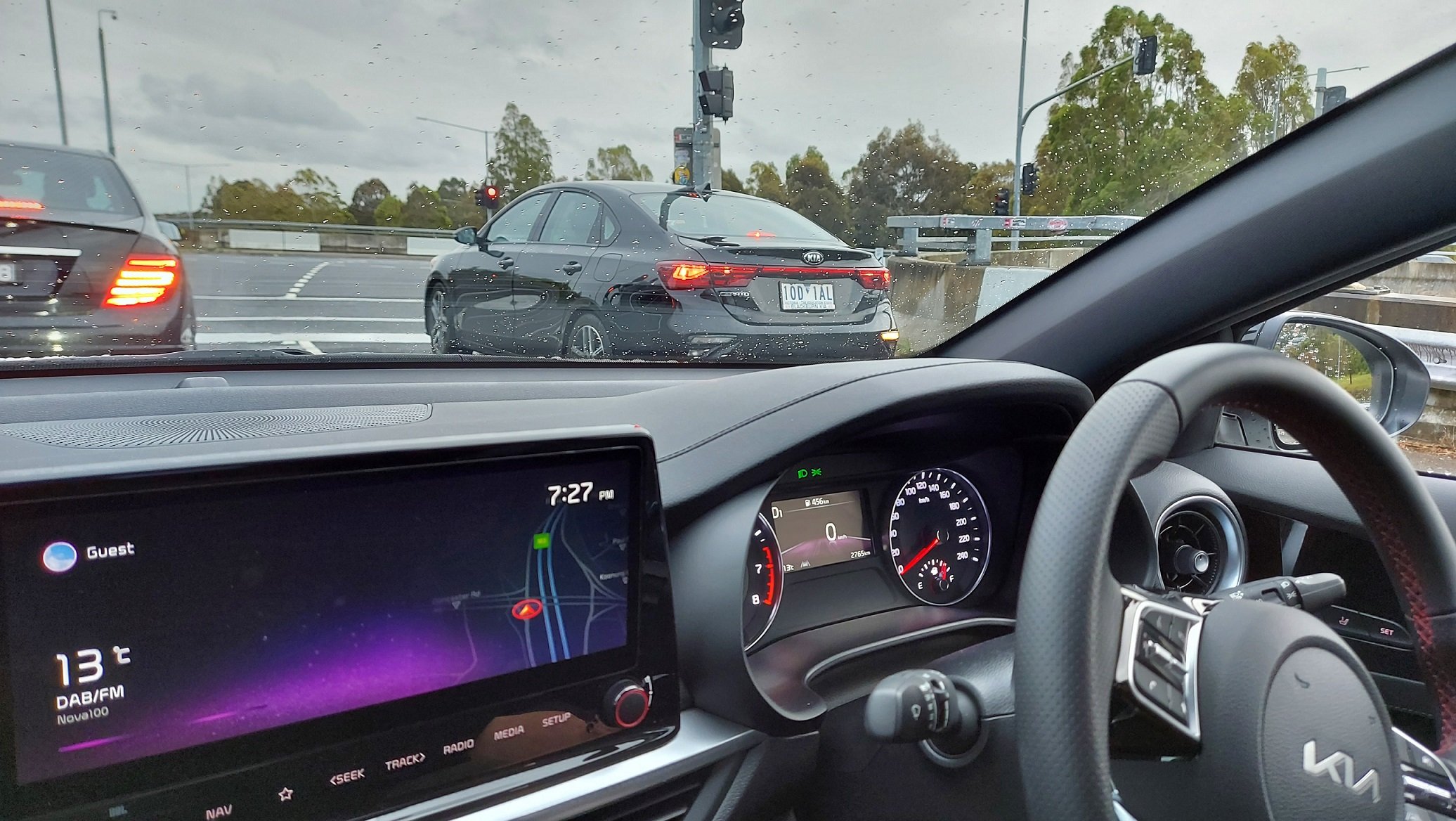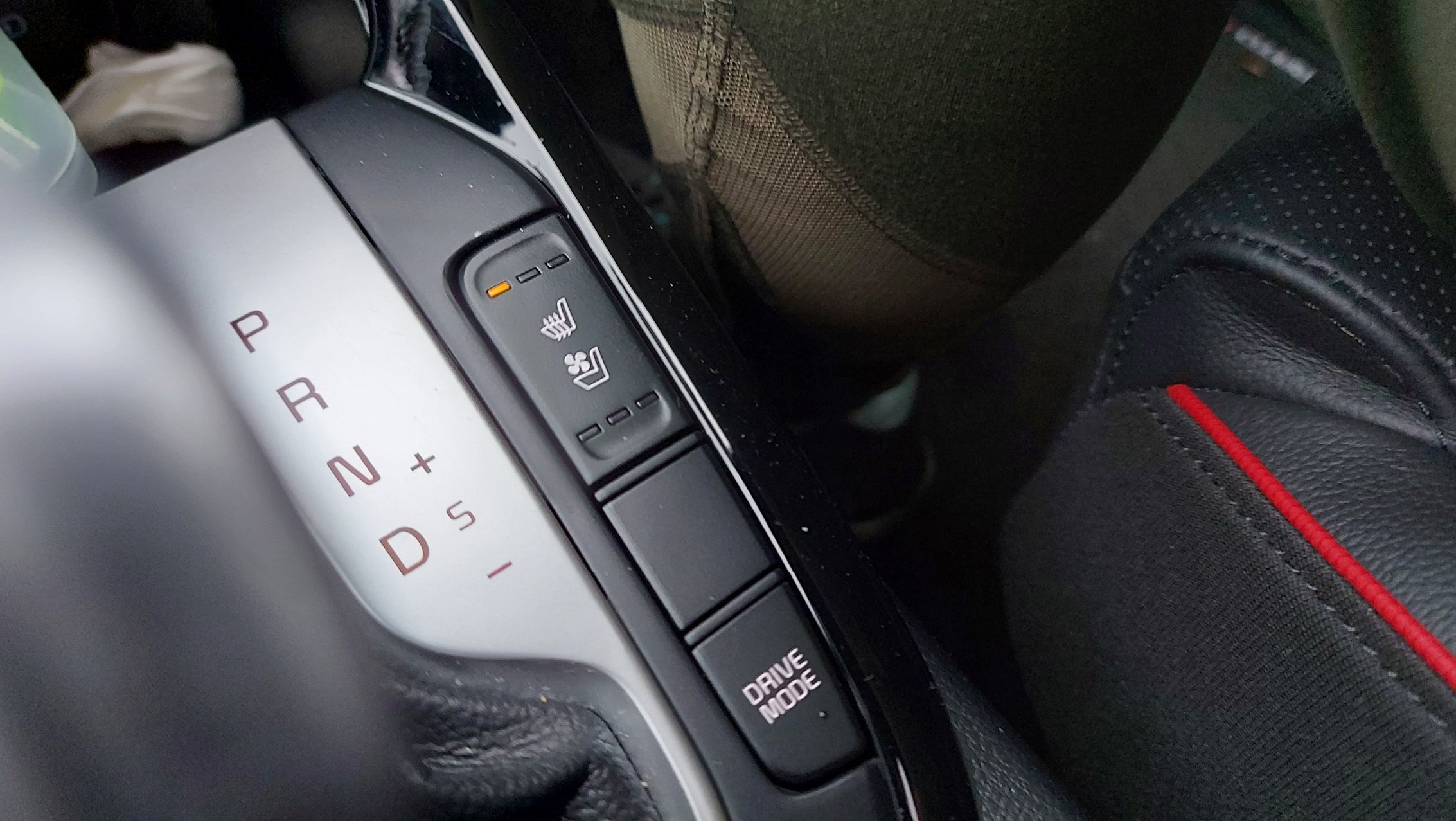Kia Cerato review and buying guide
Just because small cars grew into fairly big cars like the high-value Kia Cerato family car, doesn’t mean the ability to be fun to drive is lost. Here’s why the big-boot small car is a smart buy…
If you’re shopping for a hatch or sedan right now, having the Kia Cerato on your shortlist is essential in 2022 because this current model is virtually unbeatable for value - it’s such a compelling option for buying a new car. Let me explain why.
The Cerato vehicles I drove were provided by Kia Australia for a week in each version, and I have lived with the previous generation Cerato as a fleet vehicle, while also having driven the pre-updated version of this new model. I hope that makes sense. Point is, I’ve experienced the progress of Cerato in the last five or so years, and can tell you with certainty, it’s going to be a very reliable family transport device.
If you want all the legroom, boot space and features of an SUV, but you don’t want to pay as much (or simply don’t have the money), a Kia Cerato is probably the best value new car money can buy.
I'm going to explain why Cerato is a best family car in a few different ways, some of which you may disagree with. But ultimately I drove two versions, the 'S' and GT-Line, courtesy of Kia Australia, and I tried to do it with you in mind, the regular consumer mum or dad who has to live their life, hard and daily, in this vehicle.
I always start with the boot because it's typically the business end of a family vehicle.
I have to confess I didn’t get to do my usual boot measurements during this loan because: life.
But I did shove as much in as possible. We’re talking bags, kid’s bikes, shopping - and what would you know. It all fits. With plenty of change.
This is reason #1 Cerato is one of the best family cars you can buy. The boot is surprisingly long and wider than its suave rear design leads you to think.
There’s about 1.2 metres between the wheelarches and it’s at least 1.2m again in length. Height is between 500-600mm to the boot’s ‘ceiling', and the aperture starts at around 700mm off the ground.
The aperture itself is hampered somewhat by a slightly curvy design, but unless you’re trying to fit a fat square peg in a round hole, it’s not going to inhibit much. A double pram will go easily.
Cerato gets a temporary space-saver spare wheel under that boot floor and row two folds almost flat for longer items, and folds 40:60 relative to the kerb.
You could easily compare the boot of the Hyundai i30 Sedan_ to see how well it will or won’t take your bulkiest regular items. That’s a pretty good car in its own right, and basically the same size inside and out.
Under the boot floor is a space saver spare, which is common for this kind of car, and there are little side cubby holes on each side to stash things that might roll like bottles of red. No judgement here.
The best part, for me, of Cerato's boot is the fact you have a bootlid which closes everything off from public view and nothing gets in your rearview mirror like it does in an SUV when you over pack.
Also, you can drop the backrests forward in order to feed through long bulky items from Bunnings or BCF etc.
Just in case you get an towing aspirations, Cerato’s braked capacity is 1100kg with 75kg of towball download. It’s enough to pick up a mattress from Snooze or some mulch from the garden centre.
It’s not something you’ll see any other motoring journalist talk about, but I quite liked that the perforations in the back seat leather in Cerato were small enough that they didn’t catch a lot of crumbs, dirt and sand. Instead it slides into the larger folds where it collects and can be easily cleaned. As a potential future owner, you’ll appreciate this, long-term.
Installing a child restrain is so wonderfully easy in a small sedan because there’s no reaching over the seatback fumbling around trying to locate and clip in the top tether, only to find you have to slacken out the strap and go again because the manufacturer thought they would install the tether right down the bottom of the seatback. Geezuz I hate that, especially on a hot day - or when it’s raining. And you’re never installing a child seat on a calm, easy Sunday morning. It’s always under duress. Am I right?
Cerato’s top tether is a few inches up the rear parcel shelf under a little plastic cover. Dead simple. In the hatch they’re located on the seatback again, but they’re fairly easy to reach owning to not being a very big car. like an SUV. This is yet another advantage to having a sedan over a hatch, in addition to your stuff being locked away from prying eyes.
The ISOFIX points are slightly off-centre to their indicators, but it’s no big deal because they’re right there and easy to clip onto. Just do yourself a favour and offer enough slack because they’re positioned quite snugly either side of the restraint stabiliser bar at the bottom. You’ll need to tilt each side of the restraint as you latch each ISOFIX connection. This is not a fault, it’s just the nature of having a fractionally smaller backseat base than, say, an SUV. This does not constitute the backseat being small. It’s not impractically small, just not quite as open-space as a Subaru Outback or Kia Sorento, for example, where the ISOFIX points are slightly wider apart.
Anywho, the fold-down centre armrest has cupholders which are just big enough for most kids’ drink bottles, although it could definitely benefit from being a bit bigger. That Bluey drink bottle is 65mm in diameter, FYI.
The netting on the back of the front seats will cop a lot of kicking, so anything you put inside it won’t be protected from boredom and the antagonising little darlings, so don’t store anything there of importance.
And the little buggers get air conditioning vents in row two, behind the centre console, which are easily reached by the driver or front-passenger for positioning or simply closing off. There’s also a single USB point at the bottom, which you can get a splitter for in the event of multiple kids needing multiple devices charged for longer periods of time.
Unless there are grown-ups in the back seat, you won’t squash any little legs or feet by rolling the front seats right back. Although, you might invite pestilence and irritating behaviour by being that close. You’ll have to assess that with your own kids.
You’re primarily going to drive Cerato in suburban and congested city areas, so you'll be glad to know its remarkably easy to:
See out of. No ridiculously enormous A- and B-pillars blocking your lines of sight either at speed or while low-speed manoeuvring.
Position in carparks, driveways or to exit (in drive or reverse) junctions, roundabouts or just parking on the streets.
Thread through traffic; crawling through dense concrete carparks, or cruising down the freeway performing the odd overtake.
It’s all pretty seamless and nothing catches you out, either in the traffic around you, or within the Cerato itself. Thanks to everything being where you need it, various functions being simple to find and activate, and the systems like lane-keeping aren’t entirely awful to live with. But you’ll probably wanna turn them off if you actually passed your driving test with proficiency.
There’s reasonable storage space for a phone, cupholders are behind the transmission shifter (hooray), and the buttons for your primary uses (radio, media, navigation and settings) are named thus. And unlike Hyundai's bad design habits, they’re black buttons with white font, and they’re backlit, so you can read them on a sunny day with reflections galore.
Unfortunately, Kia’s in love with piano black.
Luckily, Cerato doesn’t have a lot of surface area that would mean piano black could be used liberally. Unlike Sportage, for example.
Cockpit storage for phones, keys, drink bottles, receipts and the odd squeeze bottle of moisturiser or hand sanitiser is reasonable. There’s always somewhere to put it, including the centre console, door bins, the primary centre storage bin, and in the door handle itself (always a good option for the key if you’re taking a lot of stuff).
Of course the Cerato's front passenger footwell is within easy reach for a suitcase or work bag of some kind. And the sunglasses case does actually hold a pair of average sunglasses. Yes, I wear average sunnies.
Not only are Cerato's sporty bucket seats in the GT-Line very comfy on both suburban and freeway roads, so too are the cloth-bound seats in the front and back of the lower-spec S version. It shows Kia has quite cleverly designed the seat’s shape to be ergonomic and promote good posture, it’s not just relying on leather and padding to simply cushions bumps, corrugations and rough roads.
The dimensions of Cerato are interesting, especially in the context of buying one against an SUV, and they’re important to understand just how similar it is in practical terms to something like a mid-size Sportage or Mazda CX-5 (Maxx Sport, similar price).
CX-5 is 4.5 metres long, Cerato is 4.6 long. CX-5 is 1.6 metres high, Cerato is only 1.4, so that’s a 20cm difference - and yet their wheelbase (the space between the sets of wheels where passengers sit and directly relates to cabin space) they’re both exactly 2.7 metres long. So exactly the same amount of cabin space, but CX-5 weighs 1641kg (kerb weight, full of fuel), and Cerato weighs about 1413kg full of fuel. Cerato in its heaviest form, weighs 228kg less but offers the same amount of legroom, headroom and cabin space. It also has a similar-sized boot, albeit shielded from prying eyes.
I’ll get to driving Cerato shortly. Let’s talk about the tech.
In the same way there's a healthy and unhealthy amount of screen time for kids, there's equally enough tech in Cerato to get you through today's world, without turning you to the dark side.
Obviously, you get Bluetooth, DAB+ digital radio, AndroidAuto and Apple CarPlay are standard and easy tonuse via a USB cable, there are charging ports where you need them: two up front, and two in the back.
Headlights are excellent with LEDs all over, and a really wide, long throw of light down the road on high-beam, and decent low-beam (driving beam) projection. Also, interior lighting on Cerato is especially slick. The red light on black theme works very nicely for standing out, being legible, but not offering too much glare - for my eyes at least (and I have perfect vision).
While you don’t get a 360-degree camera system, you do get a clever little graphic which tells you which sensors (front and rear) are responding to the environment around you, and it’s quite accurate, and fairly quick to respond.
The reversing camera itself is clear enough in resolution, although it’s not the best by a long shot, but it’s perfectly fine for the price you’re paying. Dynamic guidelines are accurate and the stretchy box does a decent job of helping you see where the vehicle is going.
However, the external design of Kia’s rearview camera means rain drops dangle off the rear spoiler and hang in front of the lens, and they also dribble down over the fisheye lens and stay in the rim. This can be problematic when you aren’t in a situation where you can jump out and wipe the droplets off.
Many rearview cameras have this dangling droplets issue, so it’s not just Kia.
Let’s talk about performance and driving the Cerato generally.
Straight up, this is not a hot hatch, by any means, but Cerato GT is a bloody gutsy little car.
Flick a paddle and give it 40 per cent throttle and it’ll fling you up the road without much fuss. Just don’t expect it to launch you into another postcode like the insanely fast i30 N. Different beast.
Cerato is much more of a grunty grand tourer than domesticated WRC competitor.
Unfortunately, lane-keeping and lane departure warning default to on whenever you start the vehicle, but this is just a changing of the times you have to live with, I’m afraid. I had to.
You’ll find a way to make it part of your routine in operating the vehicle, and if it stays on, it’s only there to help. In fact, it’s even good to learn, for a while, how these features behave while activated and you’re paying attention; this way you learn not to overreact when they engage.
Hating a whole car because of this kind of industry-wide safety aspect is foolhardy, and there’s so much to like about a Cerato GT. It’s so much car for such a small price.
The 1.6-litre four-cylinder petrol engine delivers 150kW from 1500 RPM, and only weighs shy of 1300kg, so it can perform quite well, if that’s what you like. It’s not as aggressive and punchy as the i30 N-Line I drove earlier in the year, but it’s more than good enough for the cost saving - and that is this car’s party piece. Value.
Since the last version, they’ve made the response to sudden large throttle inputs and transmission reaction much quicker and more intuitive.
So you put your foot down to get around a slow vehicle, it doesn’t stay in the lower gear and revs its face off while you wait for it to change to a higher gear and settle down again. Cerato now changes gear just at the right moment to reign in the speed and revs, it’s much better, even in ‘Smart’ mode which is where I found the previous model couldn’t figure out if it wanted to be racy or civilised.
You get this perfectly comfy warm sports-sedan (or hatch) which is quite happy on a bendy backroad, while also perfectly suited for mundane driving with child seats, backpacks and kids’ bikes in the back.
Some might feel a hot hatch like the N-Line is still a bit too firm and fast for their softer preferences, which is quite reasonable - so a Cerato might be the better fit. Not to mention, the i30 Sedan is a bit angry to look at (although quite affordably practical), while Cerato GT looks a bit more Euro.
2021 Hyundai i30 N-Line Review: Which suits you, sedan or hatch?_
I haven’t driven the new i30 Sedan N-Line, but I have driven the Active and the hatch N-Line, so close enough. That would be a good performance sedan, it’s just up to you to decide on aesthetics against Cerato GT, while also trying to figure out which one does things the way you like it. Personally, Cerato GT wins with that little extra polish in how it drives, rides and handles.
Everything is where you expect it to be: ‘radio’ and ‘media’ functions on the infotainment system are within reach, unlike many Hyundai models stuck in LHD market orientation.
In traffic, Cerato is quite refined and never feels especially uncomfortable in any unreasonable way. You’ll notice on harsher roads a bit of tyre roar, but it’s not unpleasant. And it handles most suburban speed humps, potholes and dodgy roads okay - it’s still a bit rough because the dampers are tuned a smidge on the sporty side, but it’s not unacceptable like it would be in an SUV, or luxury car costing five times the price.
Cerato visibility is quite good, there’s very little that you can’t be aware of, the rearview mirror isn’t blocked by chunky bulkheads and rear C-pillars like in SUVs. It’s also quite easy to find a good driving position in terms of steering wheel rake and reach, seat height and distance from the pedals. These are the most common things SUV buyers claim they want, all perfectly available in a regular hatch/sedan.
The back seats is a bit cramped for anybody nearing six-feet tall, but that’s to be expected. However, it’s bearable for short trips here and there, bumming a lift home etc.
CONCLUSION
You might notice I haven’t got a dedicated section of criticisms for Cerato in this review - and I make a specific point of having such criticisms because no car is perfect. But there’s very little to fault with this car, given its price and what you get for that coin.
You do need to know that the drive programs include a setting called ‘Smart’, which in the past hasn’t always lived up to the name. But in this new generation Cerato it’s much better. It can still get a bit caught-out when you change your mind suddenly - like when you go from boy racer to polite grandmother because you manage to spot a police car up ahead and all festivities stop.
I think Kia’s new badge looks like a ‘K’ and reverse ‘N’…
Oh, I think the door mirrors could be a bit bigger. Even if you have them properly adjusted outwards so you cannot see the side of the vehicle on the inside edge, it would be helpful to have a bit more height; we’re talking millimetres here.
I do find just wanting to use the digital radio means you can find yourself going around in circles trying to select from the station list, which can be a difficult (small) icon to push while driving, and then once you’ve picked a station, it returns to the radio-home screen. But, when you’re doing this, you inevitably find every station is playing shit songs, or just ads, so you keep going back and forth to that station list, which is really annoying. As opposed to just staying on the station list screen until you find something good.
And on occasion, the sun can come down at an angle through the rear glass onto whoever’s head is in the back seat, including kiddo in his/her restraint.
Lastly, there’s not a whole lot of storage space, generally, but it’s because there’s less real estate to put cubbies and bins. But I suggest this is because we’ve become used to expecting an excess of places to put or miscellaneous junk, rather than just taking what we need. Centre console, glove box, the footwells, the doors, the back seat, the forward cavity for your phones, keys and sunglasses - there’s enough space. Just not an abundance of.
It’s very hard to fault Cerato on objective grounds. It’s really only when you apply your own subjective standards and expectations that things might not be to your liking - but none of these idiosyncrasies are so critical that they would render Cerato to be scrubbed off your shopping list.
This probably explains why you see a lot of them around at the moment, and why Cerato is such a popular choice for fleet buyers who need solid, reliable, affordable and purposeful vehicles.
Cerato does so much right, especially the price. Just don’t let its stature and not being an SUV turn you off.
It’ll do much more for your family transport needs than it might seem.
If you have any questions about the new Kia Cerato or any other vehicle, and you’d like a discount, email me via the red button.












